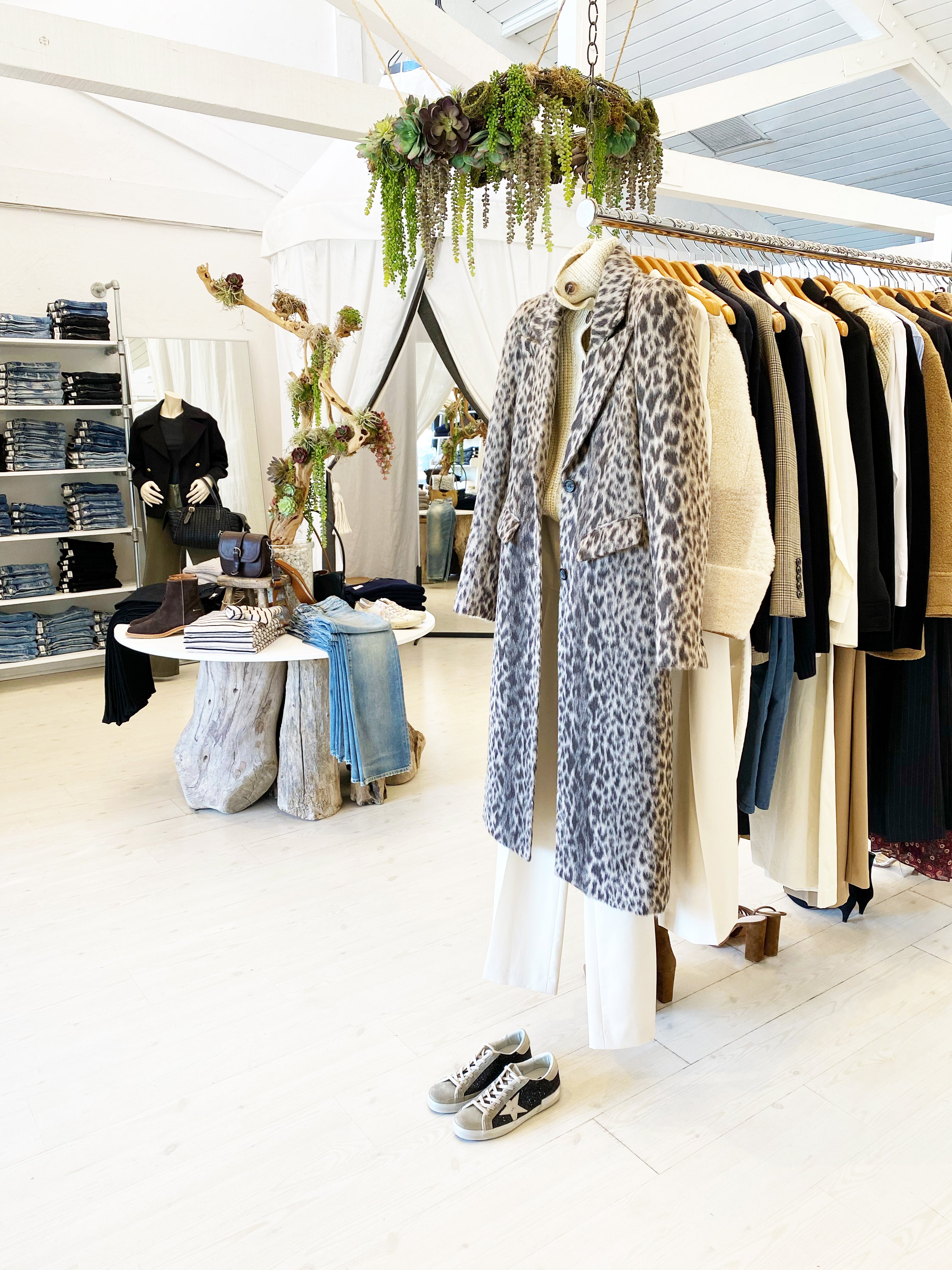Lasting Fashion: Just How Eco-Friendly Clothing Is Shaping the Future of Style
As the fashion industry faces raising analysis over its ecological effect, the rise of lasting style provides a promising choice that straightens style with ecological duty. boutique fashion. Exactly how does this movement truly affect the future trajectory of style, and what difficulties lie in advance in its widespread fostering?
Ingenious Sustainable Products
As the fashion market grapples with its ecological influence, cutting-edge sustainable products have emerged as a critical service for lowering ecological footprints. These products not just reduce dependency on fossil gas yet additionally reduce dangerous chemical usage and water consumption.
Along with plant-based materials, improvements in biofabrication have actually brought about the growth of lab-grown fabrics. Mycelium natural leather, derived from mushroom origins, offers a biodegradable and versatile alternative to animal leather. Its manufacturing causes substantially reduced carbon exhausts and water use, making it a much more sustainable option for stylist looking for to straighten with eco-friendly techniques.
Recycled products are likewise acquiring traction, with polyester made from recycled plastic bottles representing a significant breakthrough. This technology not just diverts plastic waste from oceans and landfills yet additionally minimizes energy consumption contrasted to creating virgin polyester. Together, these products highlight the potential for an extra lasting fashion industry, leading the method for environmentally aware style and production.
Eco-Conscious Production
Building on the technologies in sustainable products, the fashion sector is also re-evaluating its production procedures to further minimize environmental effect. Trick techniques consist of minimizing water usage, reducing carbon discharges, and removing hazardous chemicals.
One more essential element is the decrease of toxic chemicals typically used in coloring and finishing textiles. Eco-conscious makers are changing in the direction of plant-based dyes and waterless dyeing technologies, which not only protect neighborhood environments yet also enhance employee safety and security. Innovations like digital printing lower fabric waste and energy consumption, providing a cleaner option to traditional techniques.
In addition, openness and traceability have actually come to be extremely important. With the advancement of blockchain innovation, business can now offer comprehensive understandings right into their supply chains, ensuring ecologically pleasant and honest methods at each step. This transparency constructs customer trust and urges brand names to preserve high sustainability standards. As the demand for eco-conscious products grows, manufacturers are compelled to introduce, guaranteeing that the future of fashion is both trendy and sustainable.
The Rise of Upcycling
Upcycling, a transformative technique in sustainable style, includes creatively repurposing disposed of materials right into new, premium items. This innovative technique not only minimizes waste however also reduces the demand for basic materials, consequently reducing the ecological effect of apparel production. By reimagining and rebuilding existing items, developers and style brands have the ability to infuse originality into their collections while advertising environmental obligation.

In addition, the upcycling activity has actually equipped small companies and independent designers, who often lead in innovation as a result of their agility and creativity. By capitalizing on the bountiful accessibility of unused products, these entities add to a circular economic situation, demonstrating that fashion can be both lasting and elegant. Through upcycling, the sector takes considerable strides in the direction of a much more responsible and aware future.
Thrift Society's Effect
The burgeoning second hand society substantially reshapes the landscape of lasting fashion, highlighting the importance of conscious consumption. This social change motivates customers to accept secondhand clothes, therefore decreasing the need for new garment manufacturing and minimizing environmental influence. Thrift purchasing not only prolongs the lifecycle of apparel yet also reduces the carbon impact connected with production, transferring, and taking care of clothing.
A vital aspect of thrift society is its democratization of style. By offering a large selection of styles from different periods at economical costs, second hand top article shops make fashion easily accessible to a more comprehensive audience. This accessibility promotes a feeling of originality and creative thinking, as consumers mix and match special pieces to curate customized wardrobes without contributing to the rapid style cycle.
Furthermore, thrift culture advertises circularity in style, straightening with the concepts of a circular economic climate. As more customers and developers embrace thrift society, the style market is compelled to adjust, incorporating lasting methods to meet the expanding need for eco-conscious options.

Future Trends in vogue
Style's development is increasingly formed by sustainability-driven campaigns and technological technologies. As consumers come to be much more environmentally mindful, the sector is responding with groundbreaking innovations that redefine the future of style. One noticeable pattern is the surge of digital fashion, where digital garments can be used in increased reality atmospheres, considerably reducing material waste. This change not only deals with the digital-savvy customer but likewise decreases the environmental impact traditionally connected with garment manufacturing.
Additionally, the assimilation of blockchain technology offers new possibilities in transparency and traceability, enabling customers to validate the sustainability qualifications of their apparel. boutique fashion. This ensures accountability in supply chains and promotes ethical sourcing methods. 3D printing is yet one more development that guarantees to reinvent producing procedures by allowing on-demand production, consequently minimizing excess stock and waste
Furthermore, the advancement of bio-fabricated materials, such as lab-grown leather and plant-based textiles, presents sustainable alternatives to traditional products. These technologies lower dependence on animal products and resource-intensive crops. As these modern technologies grow, they are positioned to change the fashion landscape, merging design with sustainability. The future of style, as a result, depends on a seamless mix of modern technology, advancement, and environmental responsibility.
Conclusion
The makeover of the fashion industry via lasting practices shows an essential shift in the direction of environmental accountability. The assimilation of ingenious products, eco-conscious manufacturing techniques, and the embracement of upcycling and second hand culture emphasizes a commitment to lowering environmental impacts. As these methods gain energy, they redefine the market's story by prioritizing lasting pop over here and ethical selections. This evolution not just aligns style with ecological sustainability however also sets a criterion for future trends concentrated on responsibility and advancement.
As the style industry deals with boosting analysis over its environmental effect, the increase of lasting style offers an appealing option that straightens design with ecological responsibility.As the fashion market grapples with its ecological effect, cutting-edge lasting products have actually emerged as a vital option for lowering environmental impacts. With each other, these products emphasize the possibility for an extra sustainable style sector, leading the means for eco aware design and manufacturing.
Building on the advancements in sustainable materials, the go now fashion industry is also re-evaluating its manufacturing processes to further reduce environmental influence. boutique fashion.Upcycling, a transformative technique in lasting style, includes creatively repurposing disposed of materials into brand-new, high-quality items